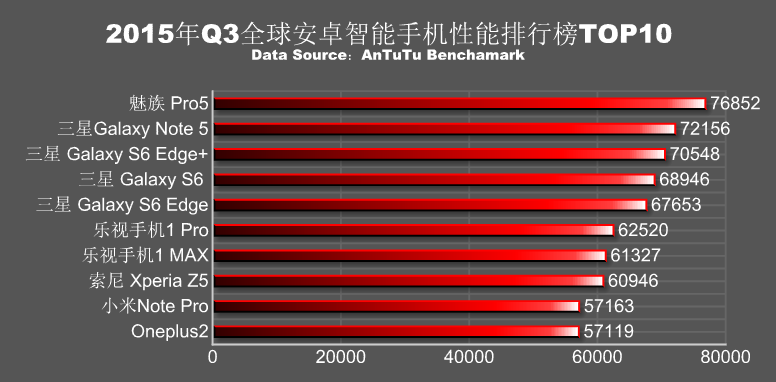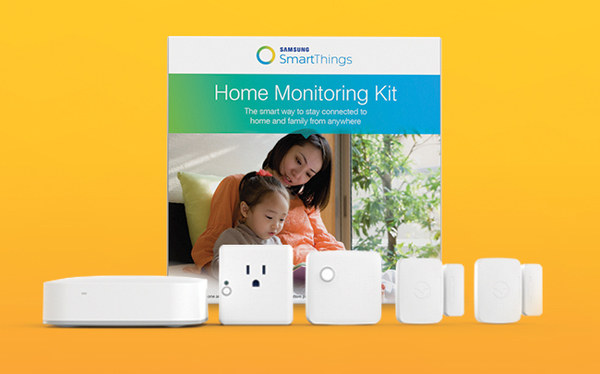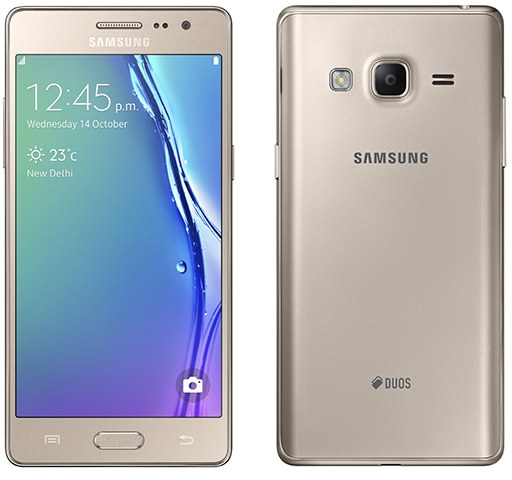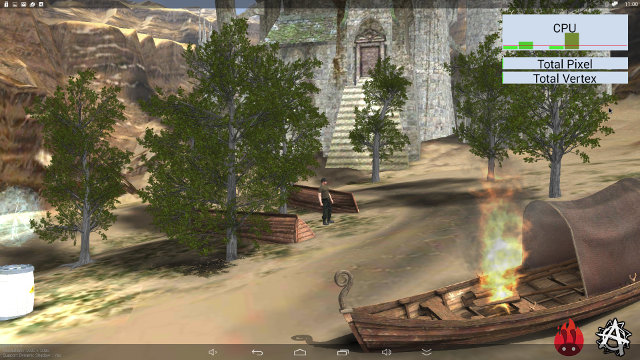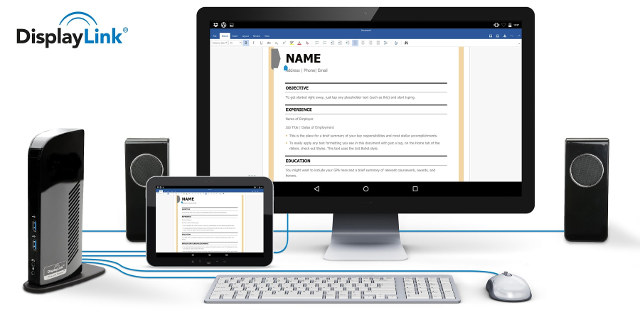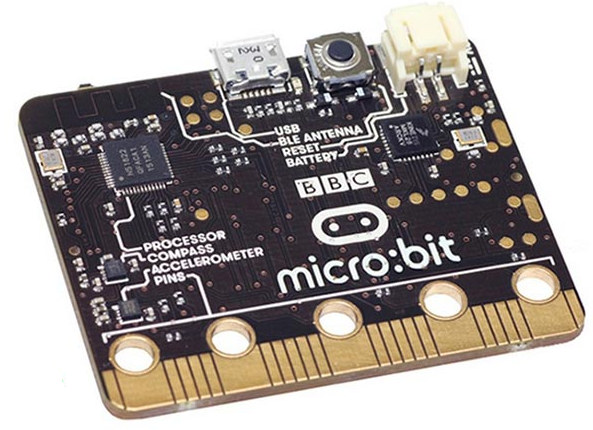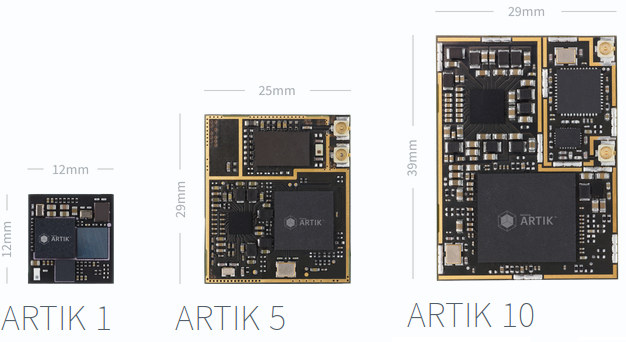I’m mainly focusing on Android mini PCs, and not so much on mobile devices. But this year, silicon vendors launched 64-bit ARM processor for TV boxes based on the low power Cortex A53 cores, lowering costs instead of improving performance of their 32-bit ARM processors, as media player don’t usually need very fast processor simply because video decoding is normally handled by the video engine. Two exceptions being Amazon Fire TV 2015 which gets over 51,000 points mostly thanks to MediaTek MT8173‘s two Cortex A72 cores, and Nvidia Shield Android TV box getting over 68,000 points, but sadly these two devices are not (easily) available worldwide yet. But on the mobile space, the race to faster and faster performance is still on, and according to a recent post on Antutu website (in Chinese), the fastest smartphones now reach over 75,000 points in the popular benchmark. I had to look up the […]
Samsung Introduces $250 SmartThings Home Monitoring Kit
Samsung has recently launched SmartThings Home Monitoring Kit including a SmartThings hub, a motions sensor, two multi-pupose sensors to detect when windows or doors are opened, and a smart outlet for home automation and monitoring via mobile devices. Some of SmartThings Hub technical specifications: Ethernet for connection to router Communication Protocol – ZigBee, Z-Wave, IP Range – 15 to 40 meters Power Supply – In-wall power adapter with about 10 hours of backup power from 4 included AA batteries Dimensions – 10.67 x 12.45 x 3.3 cm Weight – 218 grams Operating Temperature: 5 to 35°C (Indoor use only) They’ve decided not to include WiFi, or omitted in the product page, so it would have to be close to your router. The multi-purpose sensors, and motion sensor are powered by a pre-installed CR-2450 battery, while the smart outlet takes 100 to 220V (12A @ 120V max). All three devices communicate […]
Samsung Z3 Tizen Smartphone Launched in Russia and India
After Samzung Z1 based on Spreadtrum SC7727S processor and running Tizen 2.3, Samsung skipped the Z2, and launched Samsung Z3 Tizen 2.4 smartphone powered by Spreadtrum SC7730S quad core processor in both India and Russia, with the Russian model allegedly adding LTE connectivity. Samsung Z3 specifications: SoC – Spreadtrum SC7730S Quad core ARM Cortex A7 processor @ 1.3 GHz with ARM Mali-400MP2 GPU System Memory – 1GB RAM Storage – 8GB flash + microSD slot (up to 128GB) Display – 5.0” HD Super AMOLED (1280×720) Connectivity – WiFi 802.11 b/g/n, Bluetooth 4.0 BLE, GPS,GLONASS Cellular 2x Micro-SIM slots “Indian model” (SM-300H) – WCDMA: B1(2100),B8(900); GSM: GSM850,GSM900,DCS1800,PCS1900; 3G: HSPA+ “Russian model” (SM-300F?) – Includes LTE Camera – 8.0MP rear camera with LED Flash (F2.2), 5.0MP front facing camera Video – MP4, M4V, 3GP, 3G2, ASF, AVI, FLV, MKV USB – micro USB 2.0 port Sensors – Accelerometer, Proximity Sensor Battery – […]
Study Shows Octa Core Processors Bring Little Over Quad Core Processors in Mobile Devices
Silicon vendor are now launching 8-core and even 12-core processors for mobile devices, and I can see some advantages in terms of power consumption in processors leveraging big.LITTLE processing with low power ‘LITTLE’ cores running light tasks such as audio or video playback, while performance ‘big’ cores running much demanding tasks. However, some processors, such as RK3368, feature the same eight cores, and in real-use don’t bring that extra bit of performance or lower power consumption, except in very specific cases. So the only “advantage” of this type of processor is a marketing one, with keyword like “Octa-core”, “64-bit”, etc… Last year, I found out, that more powerful cores may be more important than many cores, when I tested Allwinner A80 processor with PVRMonitor to check CPU usage per core in real-time, and in Antutu, while Browsing the web or playing games, only a few cores were used most of […]
Connect an Android Smartphone or Tablet to a Monitor, USB Keyboard and Mouse Easily with a DisplayLink Docking Station
Following my post featuring Zenfone 2 Deluxe Special Edition smartphone with 256GB internal storage and 4GB RAM, I had an interesting discussion about mobile and desktop convergence, and we had different views on how this may pan out and what the consumers want, but we all basically agreed this was still work in progress. Another reader pointed me to his various attempts to conveniently connect his Android smartphone and tablet to a large monitor together with keyboard and mouse. He basically considered – and in most cases tested – four choices: Wireless Display solution (Miracast, Chromecast, EZcast…) together with a Bluetooth keyboard and mouse Micro USB port with MHL using a Bluetooth keyboard and mouse Slimport adapter based on MHL but with USB port for keyboard and mouse. Here’s on example of Slimport to HDMI adapter ($10). Displaylink docking station with HDMI and VGA, Gigabit Ethernet, USB 3.0 Wireless display […]
BBC Micro Bit Educational Board Features nRF51822 ARM Cortex M0 MCU
The BBC announces its intention to give away 1 million Micro Bit to British schoolchildren a few months ago, but at the time, the specifications were not completely frozen. The broadcaster has now finalized the design which is based on an ARM Cortex M0 micro-controller. Micro Bit board specifications: ARM Cortex M0 micro-controller (Nordic Micro nRF51822 Bluetooth SoC) 5x holes for 3V, GND, and 3 GPIOs 2x user buttons, 1x reset button 25x red LED indicator lights in a 5×5 matrix Connectivity – Bluetooth LE Sensors – Compass, magnetometer, accelerometer USB – 1x micro USB port for port and programming Power – 5V via USB or battery port to connect two AAA batteries Dimensions – 4cm x 5cm On the software side, the BBC has partnered with Microsoft to develop a web based, drag and drop interface for programming called TouchDevelop. Samsung is also involved in the project as […]
Samsung Artik is a Family of Arduino Compatible Boards for IoT Applications
There was a time when development boards were only reserved to companies, then boards like Arduino or Beagleboard made these available and affordable to consumers, and with the introduction of the Raspberry Pi, the maker movement grew even more rapidly, and many low cost boards started to be designed and manufactured mostly my smallest companies. But now larger companies like Intel or Qualcomm have jumped on the makers’ bandwagon, and the latest entry is Samsung with their Artik platform currently comprised of three boards that are programmable with the Arduino IDE. Let’s go through specifications for the three boards: Artik 1 SoC – Dual Core MIPS32 processor @ 250MHz (microAptiv UP) and 80MHz (microAptiv UC) without GPU Memory – 1MB RAM on-chip Storage – 4MB SPI flash Display – Up to WVGA (800×480) Connectivity – Bluetooth Low Energy with chip antenna Security – Secure element Sensor – 9-axis motion sensor […]
Samsung Galaxy S6 and S6 Edge Octa-core Smartphones Support Two Wireless Charging Protocols and UFS 2.0 Flash
Samsung Electronics announced Galaxy S6 and Galaxy S6 Edge smartphones at Mobile World Congress 2015 during their “Unpacked” event. Both features Exynos 7420 octa-core SoC with 64-bit ARM cores, and 5.1″ display, bit the Galaxy S6 Edge display is curved on both sides. Galaxy S6 & S6 Edge specifications: SoC – Samsung Exynos 7 Octa (Exynos 7420) octa core processor with four Cortex A57 core @ 2.1GHz + four Cortex A53 cores @ 1.5Ghz, and Mali-T760 MP8 GPU, manufactured using 14nm process. System Memory – 3GB LPDDR4 Storage – 32, 64 or 128GB UFS 2.0 flash. Display Galaxy S6 – 5.1’’ Quad HD(2560×1440) 577ppi, Super AMOLED. Gorilla Glass 4. Galaxy S6 Edge – 5.1’’ Quad HD(2560×1440) 577ppi, Super AMOLED, Dual edge. Gorilla Glass 4. Camera 16MP OIS(rear), 5MP (front). Features: Quick Launch (0.7s by pressing the home button twice), Tracking AF, Auto Real-time HDR(Front & Rear) , F1.9, Low Light Video(Front […]


